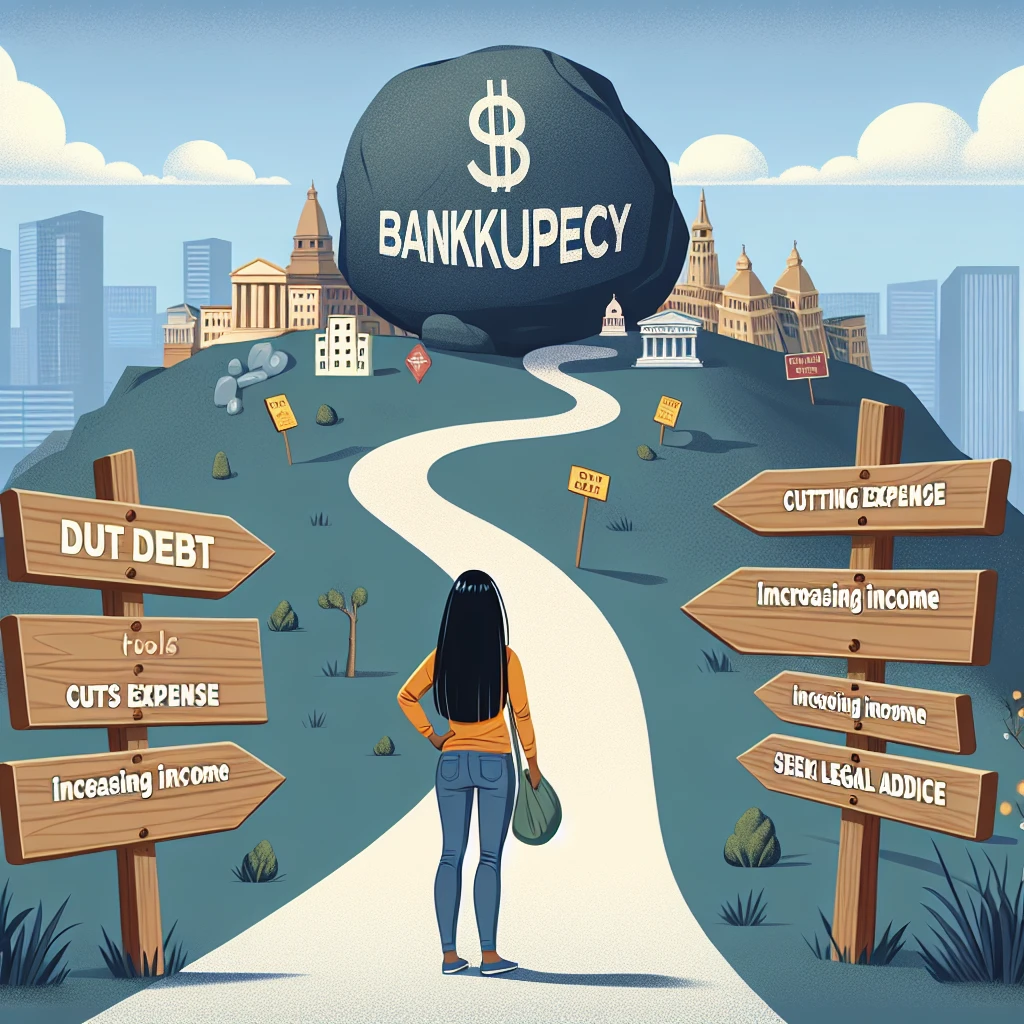KEY POINTS
- Unlike many legal fields, bankruptcy focuses on debt forgiveness and providing a new beginning, rather than punishment.
- While Chapter 7 bankruptcy may involve liquidating some assets, Chapter 13 allows more asset retention while managing debt repayments.
- The impact of bankruptcy on credit varies; Chapter 7 might lead to a quicker credit recovery than Chapter 13.
Having once practiced as a bankruptcy attorney, I frequently encountered the question of whether individuals should file for bankruptcy. Even now, as people grapple with budget management, acquaintances aware of my past expertise often pose this inquiry. If you’re contemplating this decision, you’re in good company; nearly 400,000 Americans filed for bankruptcy in the most recent year for which data is available (2022).
Chances are, if you’re like my former clients, bankruptcy looms in your mind as the formidable villain in your financial narrative. However, it’s worth realizing that, in reality, the so-called “bankruptcy monster” resembles Sully from *Monsters, Inc.* more than a Xenomorph from *Alien*.
Here’s the reasoning: Most areas of law focus on retribution. Criminal law aims to incarcerate individuals, lawsuits seek to extract monetary compensation, and even parking tickets serve as a form of penalty.
Bankruptcy, however, stands apart. It centers on forgiveness—erasing (most of) your debts and offering a fresh start.
It’s a different concept, isn’t it? So, if you’re facing financial difficulties and considering whether bankruptcy is suitable for you, let’s explore the process.
Contents
- 1 Step 1: Evaluate Your Financial Situation
- 2 Step 2: Familiarize Yourself with Types of Bankruptcy
- 3 Chapter 7 Bankruptcy
- 4 Chapter 13 Bankruptcy
- 5 Step 3: Decide If Bankruptcy Is Right for You
- 6 Debt Relief
- 7 Asset Protection
- 8 Future Credit
- 9 Step 4: Consult a Bankruptcy Attorney
- 10 Step 5: Make Your Decision
Step 1: Evaluate Your Financial Situation
Before contemplating bankruptcy, it’s essential to closely examine your financial circumstances. Are you drowning in debt due to unexpected events like job loss, divorce, or medical expenses? If keeping up with payments seems impossible, bankruptcy might be a viable option.
However, you might first explore alternatives, such as negotiating with creditors, considering debt consolidation loans, or seeking guidance from a nonprofit organization.
Step 2: Familiarize Yourself with Types of Bankruptcy
Three primary types of bankruptcy exist, though only two are applicable to consumers (Chapter 11 is designed for corporations).
Chapter 7 Bankruptcy
If you meet the qualifications, Chapter 7 can be the most advantageous option. This type of bankruptcy completely eliminates unsecured debts, such as credit card and medical bills. Secured debts, including car and home loans, can be retained and renewed or surrendered to the lender without further payment.
The challenge with Chapter 7 lies in the asset ownership limit required to qualify. This varies by state; for instance, in Oregon, married homeowners can protect up to $50,000 in home equity. If your equity exceeds this amount, you may need to sell your home and allow the bankruptcy trustee to utilize the additional equity to repay creditors.
Chapter 13 Bankruptcy
This option involves a repayment plan over three to five years, where you repay a portion of your debts based on income. Unfortunately, many individuals struggle to complete Chapter 13 plans due to challenging repayment terms.
The upside is that you can safeguard 100% of your home equity. If Chapter 7 isn’t an option, Chapter 13 is often the next consideration.
Step 3: Decide If Bankruptcy Is Right for You
Bankruptcy isn’t suitable for everyone. To determine if it’s the right choice, consider these factors:
Debt Relief
Assess whether the bankruptcy can discharge enough debt to justify its impact on your credit. Chapter 7 provides substantial relief but can be more challenging to qualify for. Chapter 13 may assist in managing debt, but it’s a longer process with a lower success rate.
Asset Protection
Consider what assets you’re willing to forfeit. Chapter 7 might involve liquidating some assets, while Chapter 13 lets you retain most assets while repaying creditors at least a portion of the owed amount.
Future Credit
Evaluate the importance of your credit score. Bankruptcy will impact your credit, but Chapter 7 might allow for quicker recovery, whereas Chapter 13 has longer-lasting effects. A decent credit score (above 700) could be achievable within two years after a Chapter 7 filing.
Step 4: Consult a Bankruptcy Attorney
Due to the intricacies of bankruptcy laws, consulting a bankruptcy attorney is crucial. They can clarify whether you qualify for Chapter 7 or if Chapter 13 is more suitable for your circumstances.
An attorney will guide you through the process, ensuring compliance with legal requirements and assisting in crafting a plan that maximizes your chances of success.
Step 5: Make Your Decision
After thoroughly evaluating your financial situation, understanding the advantages and drawbacks of the available bankruptcy options, and consulting with a lawyer, it’s time to make a decision.
While bankruptcy is a significant step, it can offer the relief needed to start anew and rebuild your financial life. If successful, you might find yourself, like many of my former clients, expressing gratitude for the alleviation of financial stress.




